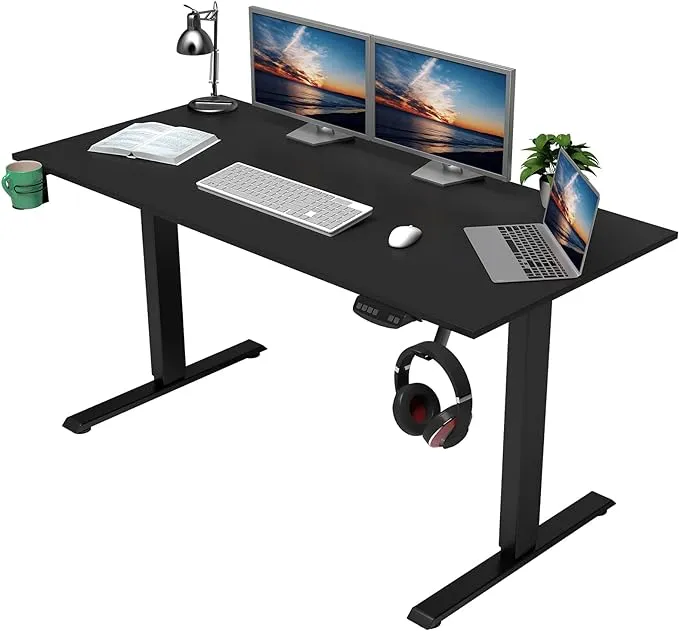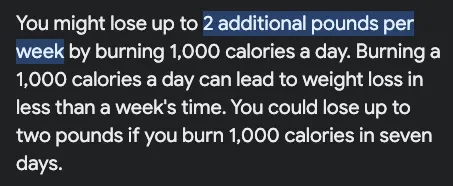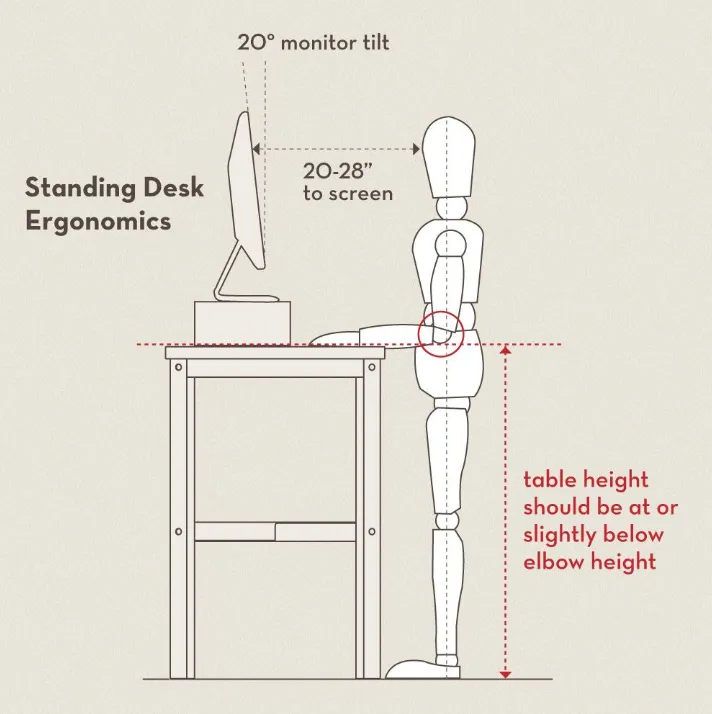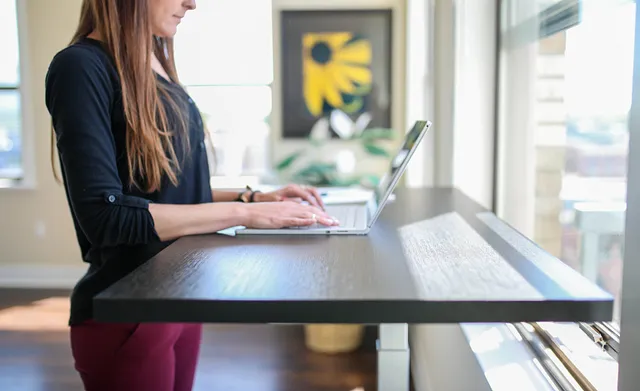Technology has made our lives easier but, at the same time, sedentary. A sedentary life is a leading cause of death—the following data from WHO is based on the people who don’t do the minimum physical activity.

What are the recommended physical activities by the Department of Health?
According to the Department of Health, just 23% of Americans meet the bare minimum of weekly exercise.
Each week, at least 150 minutes of moderate activity or 75 minutes of intense exercise is required.
Note:
I am not saying you can fulfill this crucial physical activity standard by barely buying a standing desk. However, it will help. Let’s look at another example; you already know that we burn more calories while sitting vs standing.

Research also shows that standing burns an extra 0.15 calories per minute on average.
I hope you see where I am heading by throwing all the data and facts, which means you will definitely boost your overall health by merely investing in a quality electric adjustable standing desk.
After getting all the data, I bought a high-quality adjustable standing desk, only because I work from home and have to sit 8+ hours in front of the computer. I work in the tech sector.
If you are reading this article to find that you should buy a standing desk or it is simply a waste of money.
My answer:
Buy an adjustable standing desk. You won’t regret it.
To understand the why part, I am going to explain all the pros and cons of why right now is the right time to invest in a standing desk.
Whenever a friend or family member visits, they always ask the following basic questions.
Do you work standing all the time?
Is it not bad for you?
Will it help my back?
Did the standing desk improve your productivity?
As a 30+ days experimental guy, I always jump on Mr. Google to do at least 1–2 hours of research to find out what the data says. Here is the answer. Before sharing my findings or the health benefits of the standing desk after using it for more than 90 days, let me answer the following question.
What is a standing desk?
A stand-up desk, famously known as a standing desk, allows you to change your position comfortably from sitting to standing while working from home or the office. Here is an image.

You can easily adjust the desk height based on your body measurements.
I will cover many health benefits in the next section, but the most important from the work perspective is that it will absolutely boost your productivity.
Why did I invest in a standing desk?
Two reasons
#1 — I wanted to work more. After 8 hours a day, I have a couple of side hustles.
#2 — I did not want to sit all work day. That’s roughly 8+ hours every day.
What are the health benefits of standing desk?
Studies show that sitting or lying down uses far less energy than standing or moving.
That’s why highly successful people prioritize their health and walk at least 10,000 steps in their schedule. The primary purpose is to move your body.
Early research shows that a standing desk can help to lower your blood sugar levels. According to this research paper, office workers reduced blood sugar by 43% compared to the workers who sat for the same time.
Another research is not related to office workers specifically, but it is pretty close to standing vs sitting. The study shows that bus conductors who stand all day reduce the risk of heart disease as compared to bus drivers who sit all the time.
Studies show that people who used a standing desk boosted their energy levels and reduced stress levels as compared to the people who sat during 9–5 PM.
My wife has chronic back pain; I know how uncomfortable she is all the time. I wanted to invest in an ergonomic chair and a standing desk to reduce the risk of back pain. You would be glad to learn that a standing desk has the power to reduce the risk of back pain.
According to this research paper, people reported a 32% improvement in back pain after using the standing desk for 1, 6, and 12 weeks. That was one of the main reasons why I waited to write this experimental journey. I wanted to use the standing desk for at least 9–5 PM (of course, alternates sitting and standing) to find out the true benefits.
I read somewhere that if you want to live a long life, go for long walks, and if you want to live a disease-free life, go to the gym 3–4 times a week. And if you can do both, you will lead a productive and healthy life.
A standing desk cannot replace the importance of long walks and 3–4 workouts, but there’s nothing wrong with considering it as a longevity booster.
Many studies show that people who sit the most have a 49% greater risk of dying early than those who prefer to move (stand, walk, gym).
According to 2024 stats, 40% of people diet to lose weight. Investing in a standing desk is not going to help you lose weight, but it will help as a supplement. By merely investing in a standing desk, you can burn, on average, 1000 more calories per week. Now, the big question.
How much weight will you lose if you burn 1000 calories a day?

Simple math: By only using a standing desk, based on the research, you can roughly lose 1–2 lbs in 1–2 months.
How long should you stand at a standing desk?
Everything is great in moderation. It’s not healthy to sit or stand in any position too long. But sitting for a longer time has worse effects on the body than standing. I will conclude my opinion based on the following quote.
Effects of sitting for a longer time
- Longer muscles in the legs weaken
- Hip issues because flexor muscles in the hips shorten
- Varicose veins develop that can cause discomfort
- Sitting longer can lead to poor pasture — lower back issues
Let’s answer how long you should stand in a workday.
Research is at the preliminary stage, but most ergonomic experts recommend that 5–15 minutes stand out of every hour using a standing desk.
According to this research, it’s ideal to take breaks for at least 2 hours in an 8-hour work day.
Standing also means trips to the lunch room. I used to walk around the office when there wasn’t a standing desk and sometimes stand up and try to figure out the problem.
How often should you stand with a standing desk?
I could not find any paper on this one, but many ergonomic experts say you roughly stand up every 30 minutes. This leads us to the following question.
Is standing for a long time better than sitting for a long time?

And here…
“Standing has a significantly larger impact on our longevity than sitting. Some health benefits to standing include greater muscle activation; higher levels of sugar burning; improved insulin sensitivity and long-term heart health benefits,” — Maillard Howell
How to use a standing desk correctly?
It’s pretty much the same as you use your desk; however, here are a couple of tips to maximize the benefits.
- Let me recall the research. Ideally, you should be standing for 2 hours for every 8 hours of work.
- I can say what’s working for me: I stand more than I sit in my 8-hour work day. That’s something working out for me.
- I also use this anti-fatigue mat. It’s pretty much the same as people have in kitchens. I bought it from Walmart. Here is the same anti-fatigue mat for roughly $15.
- Here is the perfect image to adjust your desk and screen.

Don’t forget to take a break. I developed this habit of taking a mental break after every 50 minutes for 10 minutes. Fortunately, I live on a hill station, and I spend 10 minutes on the lawn or going outside to take deep breaths to recharge my brain to handle the most complex tasks.
Standing desk mistakes to avoid
My mother says not everything shining is gold. It does not matter if you stay standing for a long time. Here are a couple of mistakes you should avoid.
- Too much of anything is bad; according to research, do not stand more than 2 hours in your 8-hour work day.
- Reread the previous section — how to use a standing desk correctly?
- Anti-fatigue mat is a game-changing. You will regret buying it.
- Stay away from the S curve, and focus on maintaining a correct pasture.
- Recall- switch to standing position every 30–35 minutes.
The bottom line
In a nutshell, I recommend an adjustable standing desk for everyone who at least works in an office environment, regardless of whether they are working from home or in the office.
Sitting for long hours naturally creates problems for your neck and back.
Here are my tips and what I learned using a standing desk for more than 90 days, almost every day, including weekends, to find out the real strength of the standing desk.
- Create your own standing and sitting intervals. Follow the research, and stand for at least 2 hours in your 8-hour work day.
- Don’t stand like a statue; I made this mistake in the beginning. I sometimes do calf raising while standing. It seems like nothing, but first, give it a try.
- Invest in an anti-fatigue mat.
- Invest in an ergonomic chair.
- Standing at a desk will boost your productivity and health in the long run.
- Try for at least 30 days before deciding it’s not for you. You can always return if you need something else.
- Wear comfy shoes. I work from home and prefer to wear socks on the fatigue mat.
- I recently bought this after a colleague shared her tip to reduce foot tension. It’s called a lacrosse ball. Here is the image.

- It is tiny but essential to consider how to manage your cables because you will adjust your desk daily several times.
- At the end of the 90-day experiment, I 100% believe that a standing desk is a proven way to improve productivity and health.
- However, it definitely has a learning curve, especially when you are accustomed to sitting all day while working in front of screens.
Keep moving your body!
Thank you for reading. I wish you a happy, healthy, and productive life.




